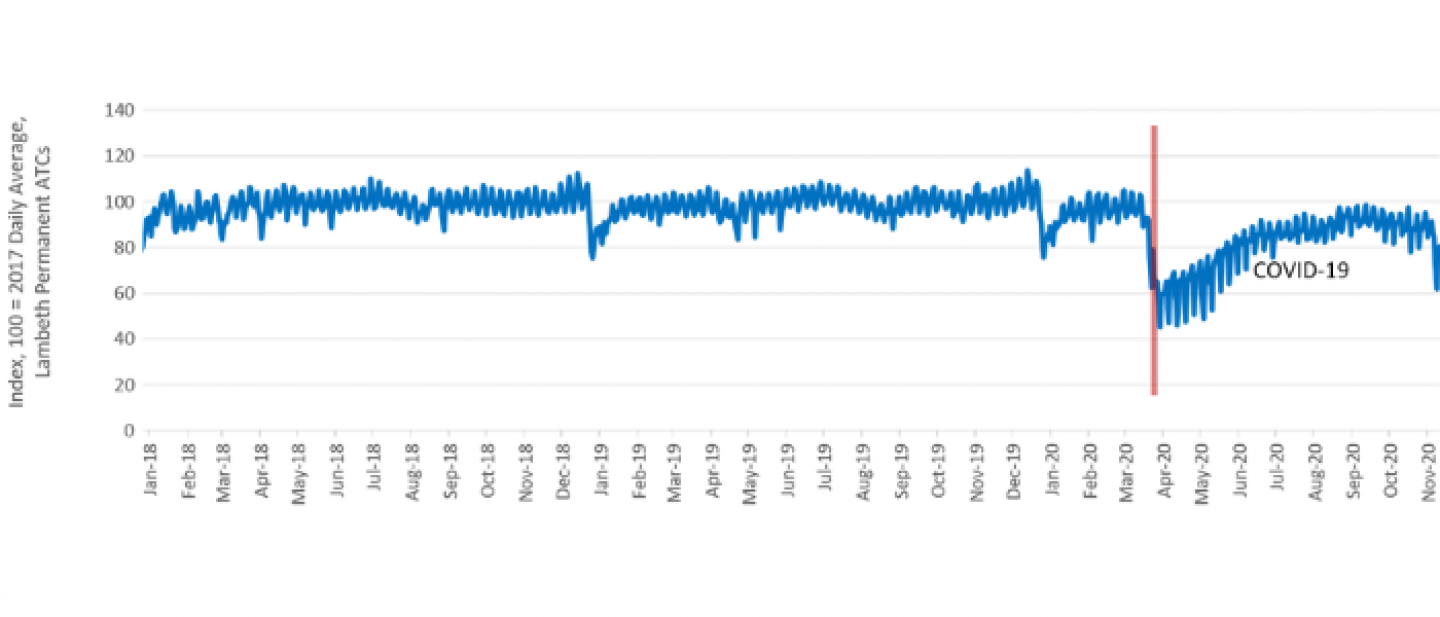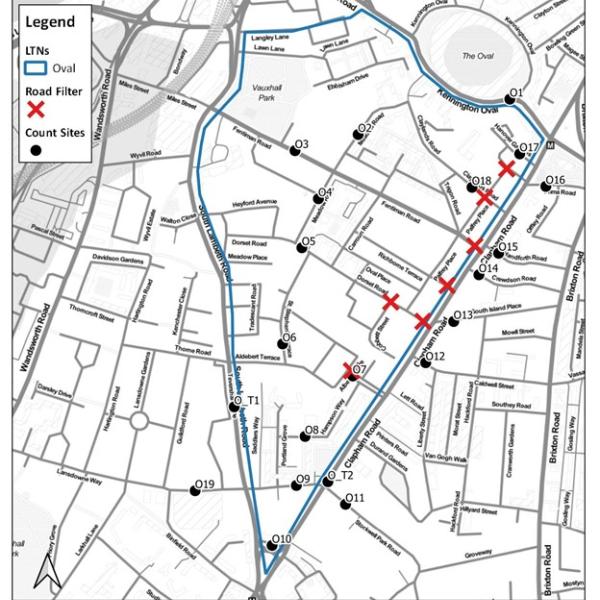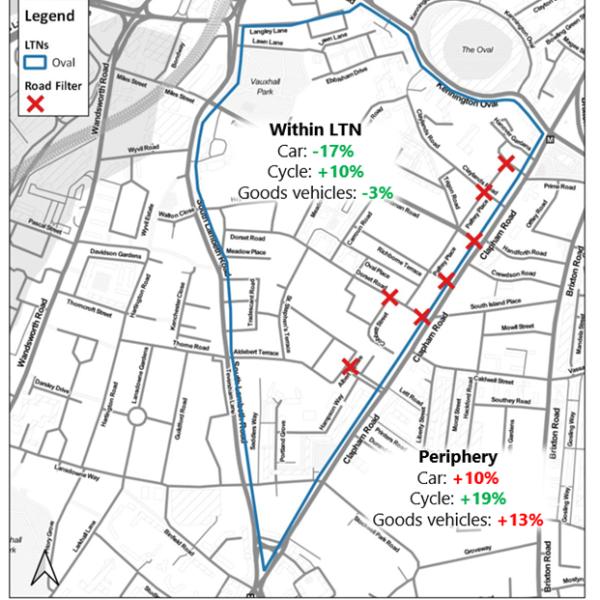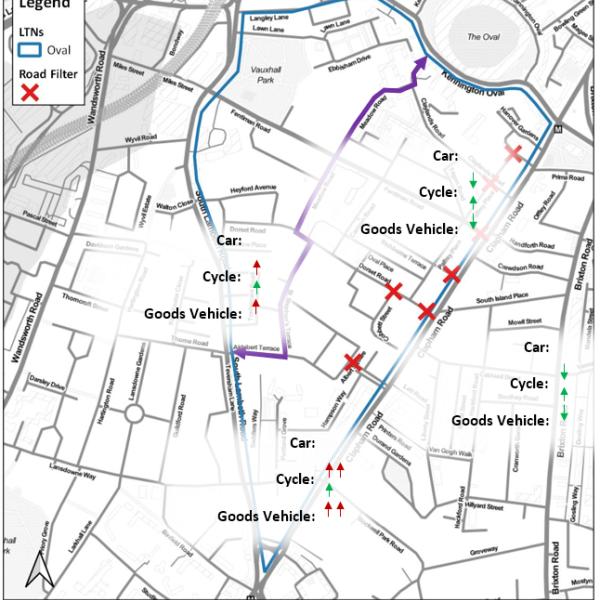Analysis
An overview of the initial traffic analysis undertaken.
Baseline
- As there have been changes in traffic flows on Lambeth’s roads between when historic data was collected and this monitoring programme (most significantly due to Covid-19, but also resulting from seasonal shifts in travel patterns – as can be seen in the chart below), a direct comparison between historical and current data to understand the impact of the LTN would be inaccurate.
- To factor in these differences, a baseline flow has been calculated for each ATC based on the difference between current background data and historic background data, both of which come from TfL-owned ATCs which have collected continuous data since at least January 2017. A worked example is provided in the Independent Monitoring Study and appendices.

Graph: Transport for London continuous traffic monitoring showing the average volume of traffic recorded at all ATC sites across the borough from January 2018 to November 2020. Download an image of the full chart with data back to 2017.
Oval to Stockwell Triangle LTN ATC sites
For the Oval to Stockwell Triangle LTN, a total of 21 ATCs were installed in December 2020. These can be seen in the map below.
- Of these, 9 were inside the boundary of the LTN, with the remaining 12 on other roads in the area to pick up any spillover effects from the LTN.
- Of the ATC sites, 1 site uses Healthy Routes as a baseline, 7 sites use the TSS Study, 4 sites use the 20mph study and 7 utilise both The Floow data and Healthy Routes.
- Data has not been collected during school holidays and has been adjusted to account for COVID-19 and seasonal shifts in travel patterns.

Image: a map of the Oval to Stockwell Triangle LTN showing the traffic count and filter locations within and on the periphery of the LTN.
Trends
General trends
The following overall percentage changes in counts were observed when comparing traffic counts in December 2020 against the baseline.
- Within the LTN, the following overall percentage changes in counts were observed against the baseline:
- car: -17%
- cycle: +10%
- goods vehicle: -3%
- Surrounding the LTN, the following overall percentage changes in counts were observed against the baseline:
- car: +10%
- cycle: +19%
- goods vehicle: +13%
- Across both internal and borough roads surrounding the LTN, the following overall percentage changes in counts were as follows:
- car: -3%
- cycle: +34%
- goods vehicle: +16%

Image: a map of the Oval to Stockwell Triangle LTN showing the general change in traffic volumes within and on the periphery of the LTN
Specific trends
- The modal filters in the Oval to Stockwell Triangle LTN have almost completely removed traffic movements accessing the area from Clapham Road; however, a portion of these vehicles now access the LTN via Aldebert Terrace and St. Stephen’s Terrace.
- Within the LTN, cycle flows have mostly increased, particularly along Quietway 5 (in purple).
- Roads to the south of the Oval LTN have also recorded significant increases both in vehicular and cycle flows, although these may be due to wider changes in the road network or other LTNs (namely Ferndale).
- Details for individual sites are located in Independent monitoring study and appendices.

Image: a map of the Oval to Stockwell Triangle LTN showing the way that traffic has changed on various roads through the area
Additional ad-hoc monitoring
- Shortly after the installation of modal filters, 7am-7pm traffic counts were conducted in June to give us an insight into immediate impacts of the LTN.
- These counts indicated that traffic increases on roads immediately to the east of the LTN, which was a concern of residents on roads such as Prima Road, had not taken place.
- The counts did highlight that traffic had increased on Palfrey Place, Hampson Way and Lansdowne Road and would be a focus for future monitoring. This has now taken place.
